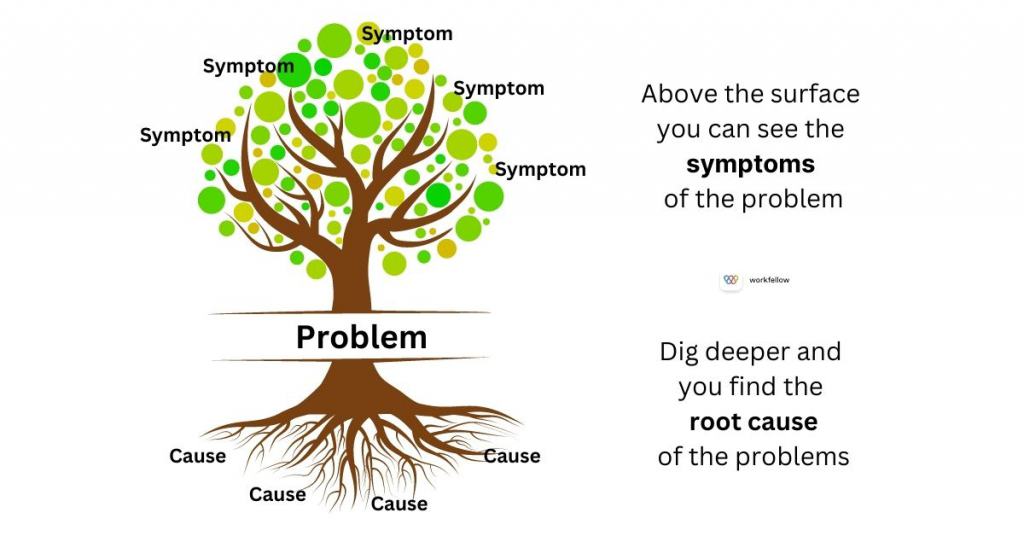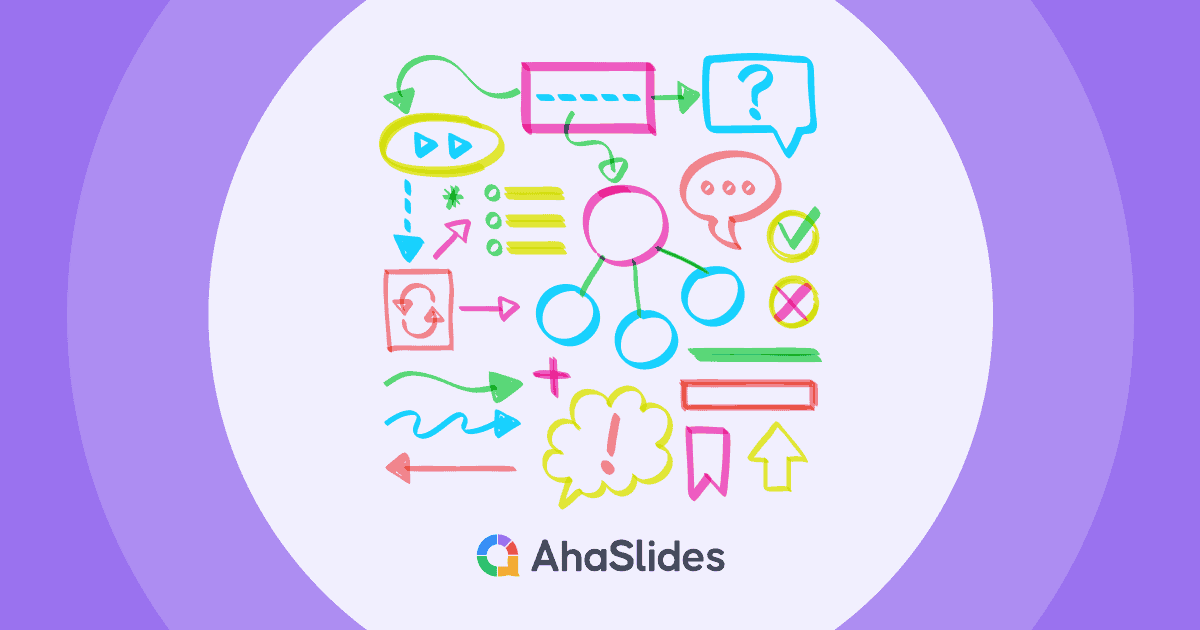Picture your team as a crew navigating through the waters of projects and goals. What happens when you hit a rough patch? Enter the root cause analysis template, your organizational compass. In this blog post, we'll uncover root cause analysis and its key principles, how to perform RCA step-by-step, and various root cause analysis templates to aid your journey.
Table Of Contents
- What Is Root Cause Analysis?
- Key Principles Of Root Cause Analysis
- How To Perform A Root Cause Analysis
- Root Cause Analysis Template
- Final Thoughts
- FAQs
What Is Root Cause Analysis?

Root Cause Analysis (RCA) is a systematic process used to identify the underlying causes of problems or incidents within a system. The primary goal of RCA is to determine why a particular issue occurred and address its root causes rather than just treating the symptoms. This approach helps prevent the problem from recurring.
Root Cause Analysis is widely used in various industries, including manufacturing, healthcare, information technology, and more. It is a proactive approach to problem-solving that aims to create long-term solutions rather than quick fixes, fostering continuous improvement within organizations or systems.
Key Principles Of Root Cause Analysis
Here are main key principles of RCA:
Focus on the Problem, Not People:
Instead of blaming individuals, concentrate on solving the problem. Root Cause Analysis (RCA) is a tool to find and fix issues, making sure they don't happen again, without pointing fingers at specific people.
Keep Things Organized:
When doing RCA, think in an organized way. Follow a step-by-step process to find all possible reasons for the problem. Being organized makes RCA work better.
Use Facts and Proof:
Make decisions based on real information. Ensure that your RCA uses facts and evidence, not guesses or feelings.
Question Ideas Openly:
Create a space where it's okay to question ideas. When doing RCA, be open to new thoughts and perspectives. This helps explore all possible reasons for the problem.
Stick with It:
Understand that RCA can take time. Keep going until you find the main reason for the problem. Being patient is important for finding good solutions and stopping the problem from happening again.
How To Perform A Root Cause Analysis

Performing a Root Cause Analysis involves a systematic process to identify the underlying causes of a problem or issue. Here is a step-by-step guide on how to conduct an RCA:
1/ Define the Problem:
Clearly articulate the problem or issue that needs investigation. Write a concise problem statement that includes details such as symptoms, impact on operations, and any other relevant information. This step sets the stage for the entire RCA process.
2/ Assemble a Team:
Form a multidisciplinary team with individuals who have a stake in or expertise related to the problem. Diversity in perspectives can lead to a more comprehensive understanding of the issue.
3/ Collect Data:
Collect relevant information and data. This may involve reviewing records, conducting interviews, observing processes, and collecting any other pertinent data sources. The goal is to have a comprehensive and accurate understanding of the situation.
4/ Use RCA Tools:
Employ various RCA tools and techniques to identify root causes. Common tools include:
- Fishbone Diagram (Ishikawa): A visual representation that categorizes potential causes of a problem into branches, such as people, processes, equipment, environment, and management.
- 5 Whys: Ask "why" repeatedly to trace the sequence of events and get to the fundamental causes. Until you get to the root cause, keep asking "why".
5/ Identify Root Causes:
Analyze the data and information collected to identify the underlying or root causes of the problem.
- Look beyond the immediate symptoms to understand the systemic issues contributing to the problem.
- Ensure that the identified root causes are valid and supported by evidence. Cross-check with the team and, if possible, test the assumptions to verify the accuracy of your analysis.

6/ Develop Solutions:
Brainstorm and evaluate potential corrective and preventive actions. Focus on solutions that address the root causes identified. Consider the feasibility, effectiveness, and potential unintended consequences of each solution.
7/ Create an Action Plan:
Develop a detailed action plan that outlines the steps needed to implement the chosen solutions. Assign responsibilities, set timelines, and establish metrics for monitoring progress.
8/ Implement Solutions:
Put the chosen solutions into action. Implement the changes to processes, procedures, or other aspects identified in the action plan.
9/ Monitor and Evaluate:
Closely monitor the situation to ensure that the implemented solutions are effective. Establish a system for ongoing evaluation and feedback. If necessary, make adjustments to the solutions based on real-world outcomes.
Root Cause Analysis Template

Below are simplified templates for Root Cause Analysis in various formats:
Excel Root Cause Analysis Template:
Here is the root cause analysis template in Excel
- Problem Description: Briefly describe the problem or issue.
- Date & Time of Occurrence: Record when the problem occurred.
- Data Collection: Specify the data sources and methods used.
- Root Causes: List identified root causes.
- Solutions: Document proposed solutions.
- Implementation Plan: Outline steps to implement solutions.
- Monitoring and Evaluation: Define how solutions will be monitored.
5 Whys Root Cause Analysis Template:
Here is the 5 whys root cause analysis template:
Problem Statement:
- Clearly state the problem.
Why? (1st Iteration):
- Ask why the problem occurred and note the answer.
Why? (2nd Iteration):
- Repeat the process, asking why again.
Why? (3rd Iteration):
- Continue until you reach the root cause.
Solutions:
- Propose solutions based on the identified root cause.
Fishbone Root Cause Analysis Template:
Here is the fishbone root cause analysis template
Problem Statement:
- Write the problem at the "head" of the fishbone diagram.
Categories (e.g., People, Process, Equipment):
- Label the branches for different potential causes.
Detailed Causes:
- Break down each category into specific causes.
Root Causes:
- Identify the root causes for each detailed cause.
Solutions:
- Suggest solutions related to each root cause.
Root Cause Analysis Example in Healthcare:
Here is a root cause analysis example in healthcare
- Patient Incident Description: Briefly describe the healthcare incident.
- Timeline of Events: Outline when each event occurred.
- Contributing Factors: List factors that contributed to the incident.
- Root Causes: Identify the main causes of the incident.
- Corrective Actions: Propose actions to prevent recurrence.
- Follow-up and Monitoring: Specify how the corrective actions will be monitored.
Six Sigma Root Cause Analysis Template:
- Define: Clearly define the problem or deviation.
- Measure: Collect data to quantify the issue.
- Analyze: Use tools like Fishbone or 5 Whys to identify root causes.
- Improve: Develop and implement solutions.
- Control: Establish controls to monitor and sustain improvements.
In addition, here are some websites where you can find root cause analysis templates to help you with your RCA process: ClickUp, and SafetyCulture.
Final Thoughts
The Root Cause Analysis template is your compass for effective problem-solving. By following the step-by-step guide outlined here, your team can navigate challenges with precision and ensure long-term solutions. To enhance your meetings and brainstorming sessions further, don't forget to use AhaSlides – a tool designed to elevate collaboration and streamline communication.
FAQs
How do you write a root cause analysis?
Define the problem clearly, Collect relevant data, Identify root causes, Develop solutions addressing root causes, and Implement and monitor the effectiveness of solutions.
What are the 5 steps of root cause analysis?
Define the problem, Collect data, Identify root causes, Develop solutions and Implement and monitor solutions.
How do I create a root cause analysis template?
Outline sections for problem definition, data collection, root cause identification, solution development, and implementation.
Ref: Asana








